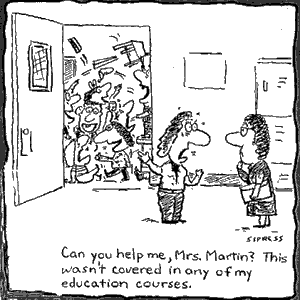Blog entry # 5
I had no idea whether the book I chose for the literature circle was appropriate or not. Our book was same old Science textbook. As a teacher of science classes, I did not have any time to read an unrelated book to a select few students while neglecting the rest of the class. I read a section from the textbook and I did the activities from a section of my textbook.
Although we read the same textbook, I followed the same procedure of reading any fiction book for literacy circle. I read the section aloud to the students and we did all the pre-reading activities, we discuss the types of cells and did the activity of KWL. We also discussed the different scientist who contributed to the discovery of the cell and the cell theory. My ESL students were very interest when we discussed the different scientists, and their native countries. We do lot of diagrams and graphic organizers, but it is a little different than the fiction book.
I did not know about literature circle at all until this assignment. I would love to do this activity with any other fiction book. It can be a very effective strategy to make the students improve their understanding. When I did this with my students for the science lesson I could see that it helps students understand the concept better.
If I were to repeat this activity again, I would choose a fiction book to read and implement literature circle. I would really recommend to other ESL teachers to implement this strategy to improve their students understanding and English proficiency.
MTSU Honor Statement:
This assessment/assignment was written solely by me. In no way have I plagiarized (represented the work of another as my own) or otherwise violated the copyright laws and academic conventions of fair use. I know that violations of this policy may result in my being dismissed from Middle Tennessee State University and/or appropriate legal action being taken against me.
Sariya Mohammed
